9 Steps: How to Scale a Grow Op to Increase Profits
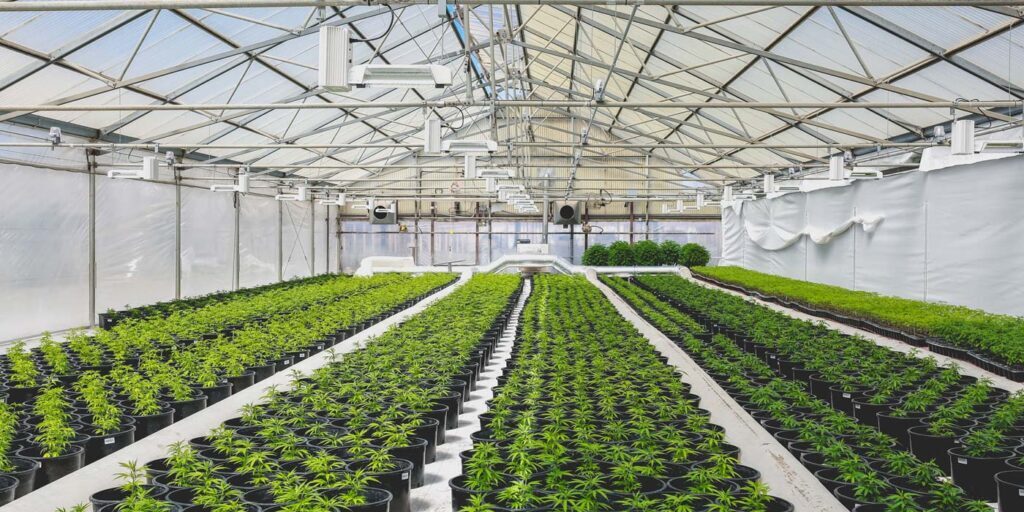
If you’re in the business of cultivating cannabis on a commercial scale, understanding the ways to expand your existing operation is key to increasing production capacity and improving efficiency. Knowing how to scale grow op can also help improve profitability and ensure you stay ahead of the competition.
Whether you’re a commercial grower or a cannabis business owner, the importance of knowing how to scale your grow operation for business growth should not be underestimated. As the cannabis industry continues to expand, your operation must also expand to meet the needs of consumer demands and industry trends.
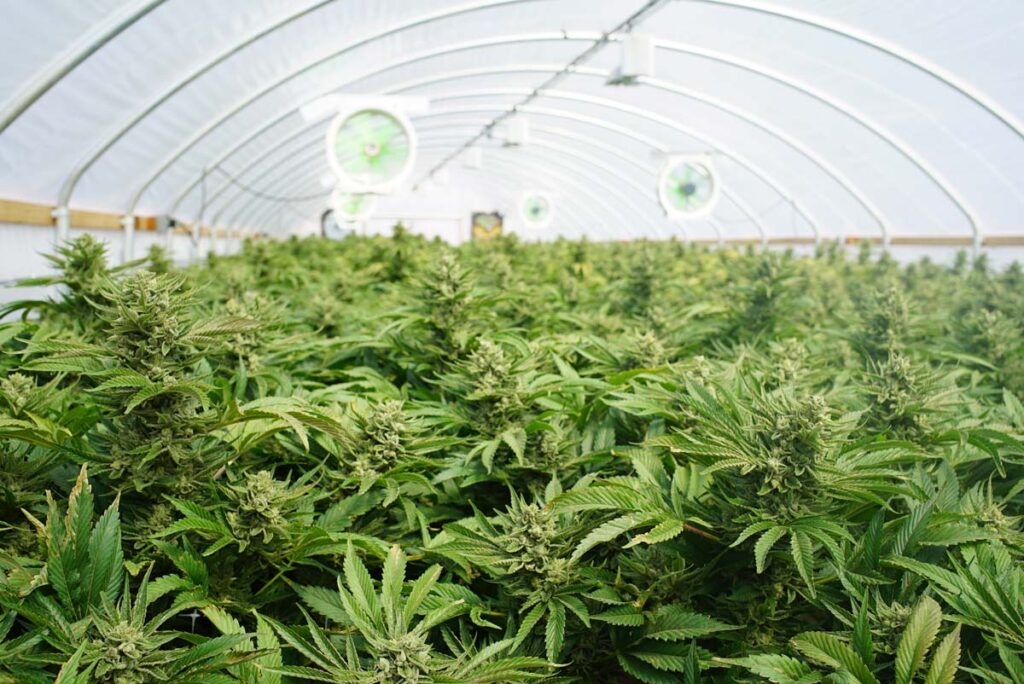
9 Steps To Scale A Commercial Grow Op
Knowing how to scale your grow operation correctly requires careful planning. Taking the time to plan accordingly will ultimately allow you to streamline the production process, increase your profit margin, and solidify your presence in the increasingly competitive marketplace.
1. Market Research
In 2022, the US cannabis market size was worth a little over $13 billion. By 2030, it’s expected to be worth just over $40 billion. The driving forces behind this compound annual growth rate (CAGR) of 14.2% include increasing legalization and the rising acceptance of the use of cannabis.
Whether you’re growing cannabis on a small boutique scale or on a commercial scale for retail sales, it’s vital to understand current market demands and trends. Engaging in market research is critical for continued success in the cannabis industry, no matter the size of your grow.
The medical cannabis segment, for example, accounted for the largest revenue shares (77%) in 2022. The recreational cannabis market is expected to grow at a rate of 19% through 2030. And while cannabis flower is still the most popular cannabis product, the cannabis concentrate market is one of the fastest-growing sectors in the industry. If concentrates aren’t part of your current business practice, they may be something to consider when scaling your grow.
Market research is key to understanding industry trends and making the best decisions for expanding your current operation.
2. Planning
Once you’ve done thorough market research, it’s time to start planning. When devising a plan to scale your commercial grow room, outline your goals, strategies, and expected expenses. Your goals are the first thing you’ll want to consider, as they will help you make the best strategy to move forward. If you scale your growing operation to include a significant increase in plant count, for example, investing in processing equipment can help you streamline your processes.
3. Compliance
If you’re already growing cannabis, you’re likely well-versed in cannabis cultivation laws in your area. If you plan to scale your growth, remaining compliant with local, state, and federal laws is essential. While cannabis cultivation is not yet fully recognized under federal law, states and local jurisdictions are permitted to implement their own laws that authorize commercial cannabis cultivation.
When expanding your current operation, it’s vital to ensure you comply with state and local laws to avoid any potential issues. In California, for example, there are different cultivation license types, which are based on the type of production, lighting used, number of plants, and size of the canopy (where flowering plants are grown). A different license is needed for “specialty cottage” grows (up to 25 mature plants or 2,500 square feet of canopy) compared to “large” grows that allow for more than one acre of total canopy outdoors and more than 22,000 square feet indoors.

4. Create a Financial Plan
Creating a financial plan when scaling your cultivation operation is also important. Expanding your grow comes with expenses and understanding the cost before you begin is vital to ensure you have the capital necessary to increase production.
Your financial plan should include a budget that covers the entire cost of scaling, including:
- Infrastructure upgrades (whether expanding your current grow operation or moving to a new location)
- Hiring and training employees
- Purchasing new equipment
5. Evaluate Your Current Infrastructure
When planning to scale a grow op, assessing your current infrastructure is an integral part of the process. You’ll want to determine what, if any, upgrades are necessary to support the growth you desire. It’s very likely you’ll need to make upgrades to accommodate the increased scale of your operation. This could involve investing in new cannabis processing equipment or building out the grow room to make space for new plants.
6. Consider Employee Management Needs
If you’re scaling your grow op to increase production capacity, it likely means you’ll need to hire and train additional employees. Increased plant counts typically call for more labor, and more capital invested in training and overhead.
7. Develop an Efficient Supply Chain Management System
If you plan to scale your grow op, the need to develop an efficient supply chain management system is key. This ensures that you’ll be able to have access to the resources and materials necessary to grow cannabis on a larger scale.
Supply chain management consists of five areas, including supply planning, production planning, inventory planning, capacity planning, and distribution planning. Developing a well-organized and thought-out system can help ensure you’ve got everything you need to successfully scale your grow.
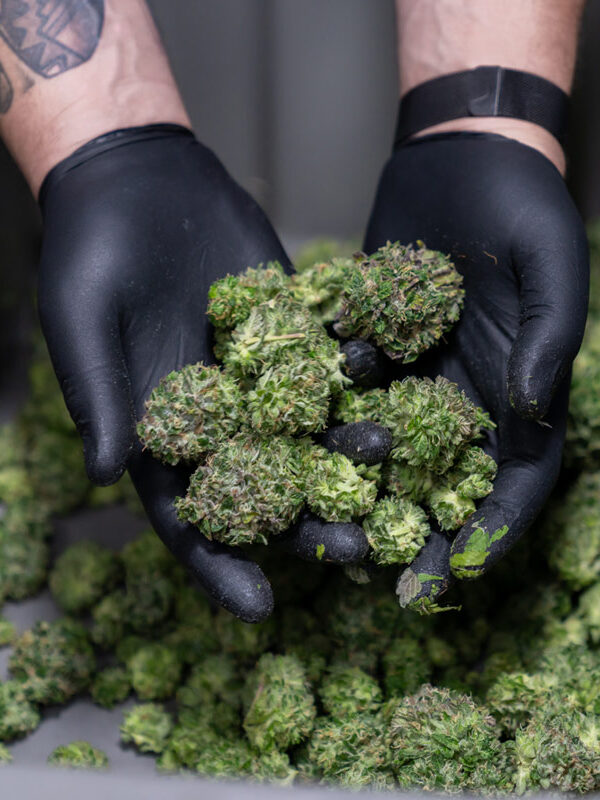
8. Consistently Provide The Highest Quality Cannabis
Regardless of the number of cultivated plants, flower quality should be considered before scaling your grow. It’s extremely important to implement a quality control system to ensure that consistent, high-quality cannabis products are being produced.
The cannabis market is extremely competitive, and with more producers to choose from, increased information, and the liberty to price shop, consumers can be picky despite the high demand for quality cannabis.
9. Seek Legal Advice If Necessary
Ensure you meet the requirements of local and state laws. Before you scale your grow op. think about the legal and insurance implications and consider seeking the advice of legal and/or insurance professionals if necessary.
Identifying Important Aspects Of Scaling Your Grow
Scaling a grow op is a huge undertaking composed of several different facets. When seeking to expand your commercial cannabis cultivation operation to include more plants, the following are all aspects to consider.
Infrastructure Upgrades
Increasing the number of plants in your commercial cultivation op will likely demand the following infrastructure upgrades:
Cannabis Equipment
More plants typically call for more processing equipment. This could range from a bucking machine that makes stripping cannabis flowers faster and more efficient, to a hybrid trimmer that can effectively trim both wet and dry flowers or any other piece of equipment that can help streamline the process.
Climate Control
Cannabis cultivation requires control and precision. Whether growing indoors or in a greenhouse, cultivating high-quality cannabis in a controlled environment is critical. Temperature, humidity, airflow, and carbon dioxide levels are all environmental aspects that need to be considered when it comes to scaling your operation.
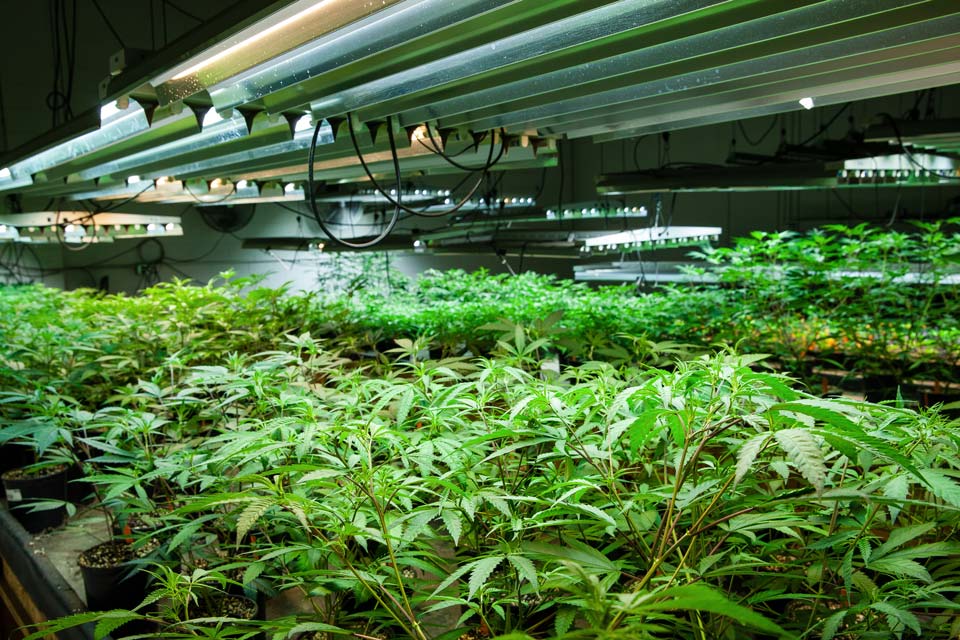
Lighting
Lighting is important when growing any plant. Like other plants, cannabis has its own preferred light spectrum and intensity. Modern grow ops typically use LED lights, as they use less heat and are more energy efficient than high-pressure sodium (HPS) lights that were standard for decades. Keep in mind that grow lights (even those made with the most modern technology) are constantly radiating heat, which will increase temperature and humidity levels. It’s important to remember that light plays a huge role in determining optimal climate control to maintain the ideal cultivation conditions.
Irrigation
Cannabis irrigation can range from the most basic hand-watering techniques to advanced systems that are fully automated. The most advanced irrigation systems pull water from a stock tank that controls the mixing of nutrients and is connected to a system that uses sensors to trigger watering on a timed schedule. Semi-automated irrigation systems use bottled or premixed nutrients and purified water that gets pumped into a drip system with controls that automate watering times.
Expanding Your Grow Space
Commercial cannabis growers understand that every square foot in their grow room is important. If you plan on significantly scaling your growth, you may need to expand your space. The size of your growing area will largely determine how many cannabis plants you can grow per square foot. While there isn’t a universally recognized density for planting cannabis, most indoor or greenhouse grows typically flower plants at an average of .65 to one plant per square foot. This equates to around 10-15 plants in the flowering stage for every 4 x 4 feet of canopy.
How much space you’ll need to scale your growth is largely determined by your growth methodology. One generation of plants feeding various commercial grow rooms is different from two generations of plants. The grow room should always come first when considering the flow of your entire setup. There should be enough space for you to separate moms from their clones. You’ll also want to ensure there’s enough space to separate plants in the veg and flowering stages, as each stage requires different light, temperature, and humidity levels.
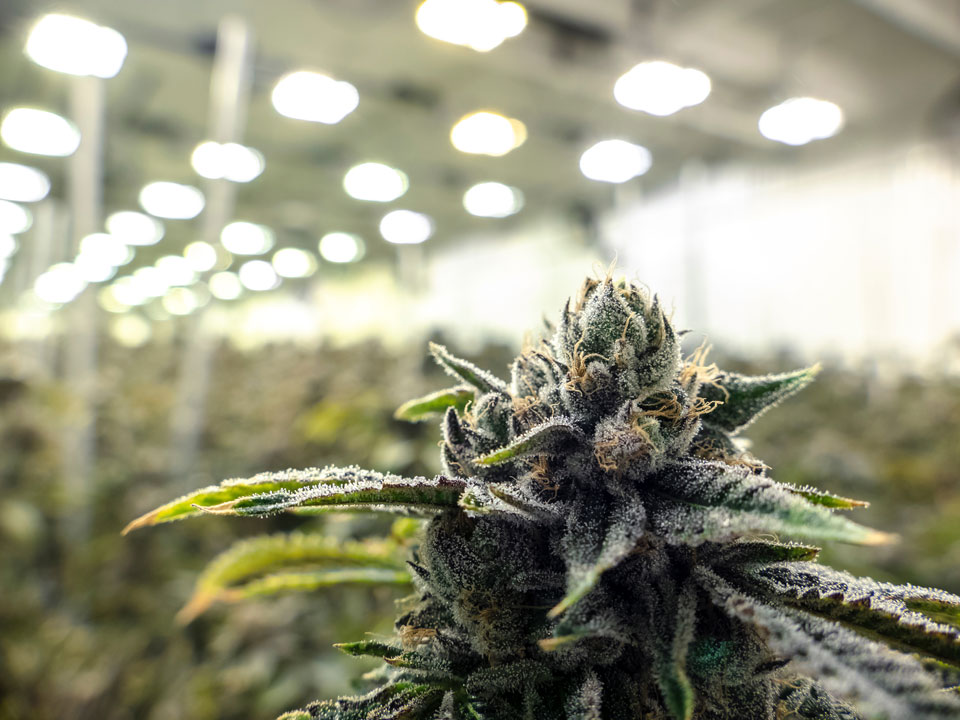
If horizontal space is an issue in your facility, you may think about utilizing vertical space, as two or three levels of harvest space can double or triple your cannabis plant quantity.
If you can’t expand your current space, you may consider moving locations. Cannabis entrepreneurs with experience in the industry understand that real estate options are limited and expensive. The “green tax” commonly charged to cannabis businesses by banks and construction companies also applies to real estate.
Aside from the expense of moving to a larger location, you may also face new compliance regulations. Local regulations governing commercial cannabis cultivation can vary. If you do plan to move locations, make sure you check compliance requirements as they might be different from regulations at your current location.
Revised Sales And Marketing Plan
When expanding your current operation, you’ll likely need to revise your sales and marketing plan. Performing a competitor analysis is key, which involves identifying competing cannabis cultivators and researching their marketing strategies. While you may already have implemented a successful marketing strategy for your current operation, cannabis marketing is often overlooked by cultivators. It’s important to put some energy into your strategy as cannabis marketing is ever-evolving. Don’t miss an opportunity to drive sales. Even if your marketing efforts have been successful so far, scaling your growth will require some changes to your current marketing plan.
Consider what makes your farm different from your competitors. Brainstorming with your team members about the unique facets of your grow op and meticulously presenting these as part of your marketing strategy can help you stand out from the competition. What makes your brand more appealing to wholesalers, retailers, and distributors compared to another company cultivating high-quality cannabis?
Distribution channels may also need to be revised when you scale your grow op. If your current operation has a short distribution channel, scaling may require something different. Say, for example, you’re currently selling your product directly to retailers. When expanding how much product you’re producing, you may consider hiring an agent that acts on your behalf as your product moves through various distribution channels.
Direct-to-consumer distribution is also gaining increased attention in the cannabis industry, which involves producers selling their products directly to the end consumer. In September 2022, a bill was filed in the U.S. House of Representatives that would permit small-scale commercial cannabis growers and producers to sell directly to consumers. In the bill, small grows are defined as those up to one acre of canopy outdoors, 22,000 square feet in a greenhouse, and 5,000 square feet of outdoor space.
Researching the best marketing strategies and distribution channels when expanding your current operation is fundamental for your continued success.
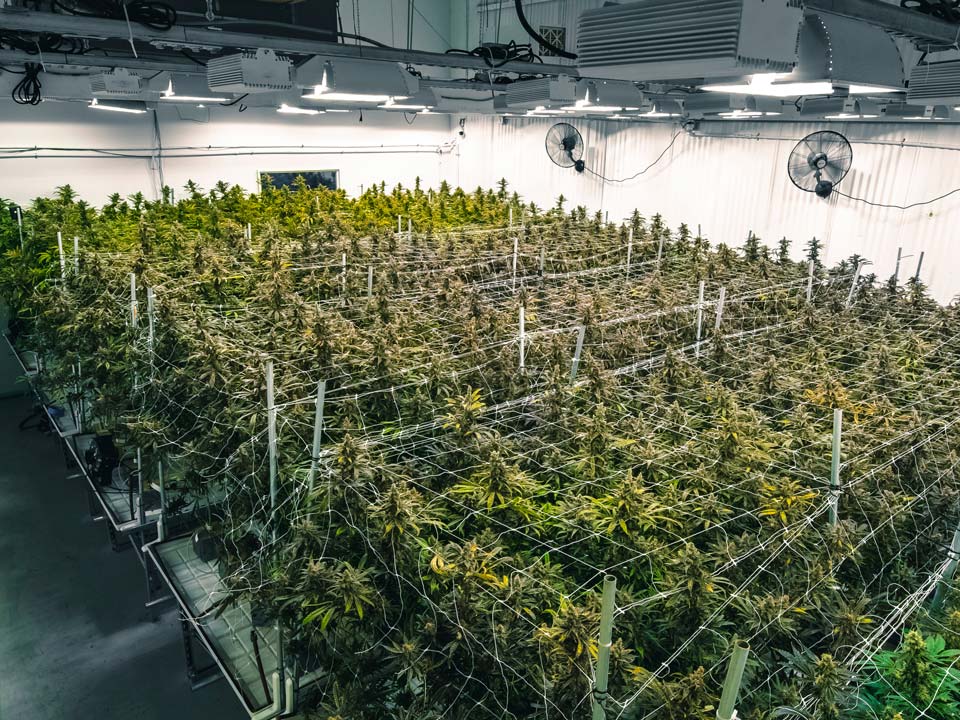
Last Thoughts On How To Scale Your Grow Op
As the legal cannabis market continues to expand, commercial cannabis growers may be interested in expanding their operations. If you want to scale your grow op to meet the increased demand for high-quality cannabis products, knowing how to do so correctly is key to successful expansion.
With proper planning and market research, scaling your grow op can become a lucrative endeavor that allows you to remain successful in the rapidly changing industry. The future of commercial cannabis cultivation isn’t just about providing the highest-quality flower. It also includes providing the material necessary to create concentrates, edibles, tinctures, and other cannabis products that are sold on the retail market.
Commercial cannabis operations are largely considered the most profitable sector in the cannabis industry and tend to have the greatest ROI. Considering the legal cannabis market is projected to grow by multi-billions of dollars through 2030, there’s never been a better time to scale your current grow op to meet consumer demand. At Triminator, everything we do starts with the cannabis farmer. We offer the most comprehensive range of cannabis processing equipment worldwide and proudly supply some of the most advanced farms across the globe. Contact us today to learn how we can help you scale your grow op.
Like what you read?
Get more insider industry knowledge sent right to your inbox
"*" indicates required fields